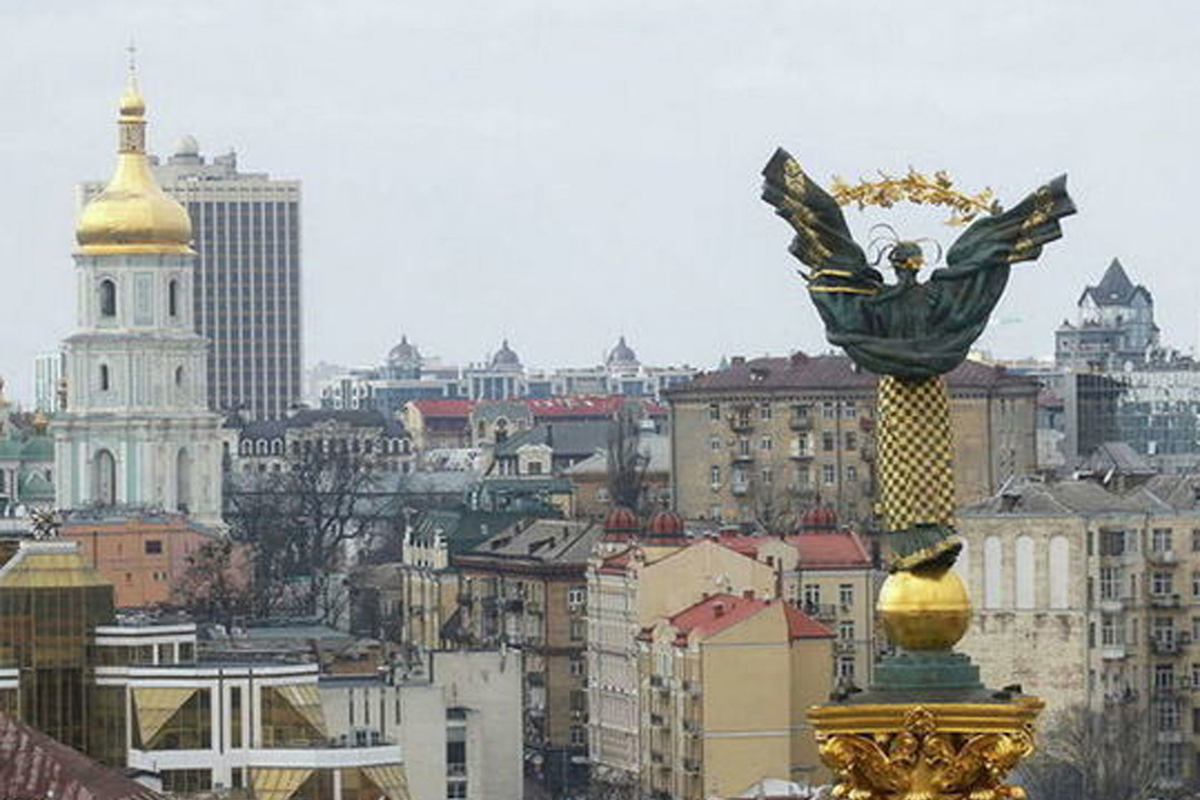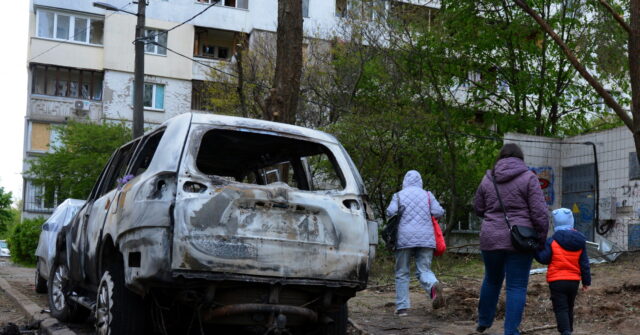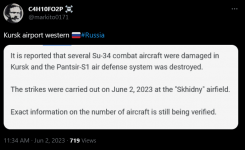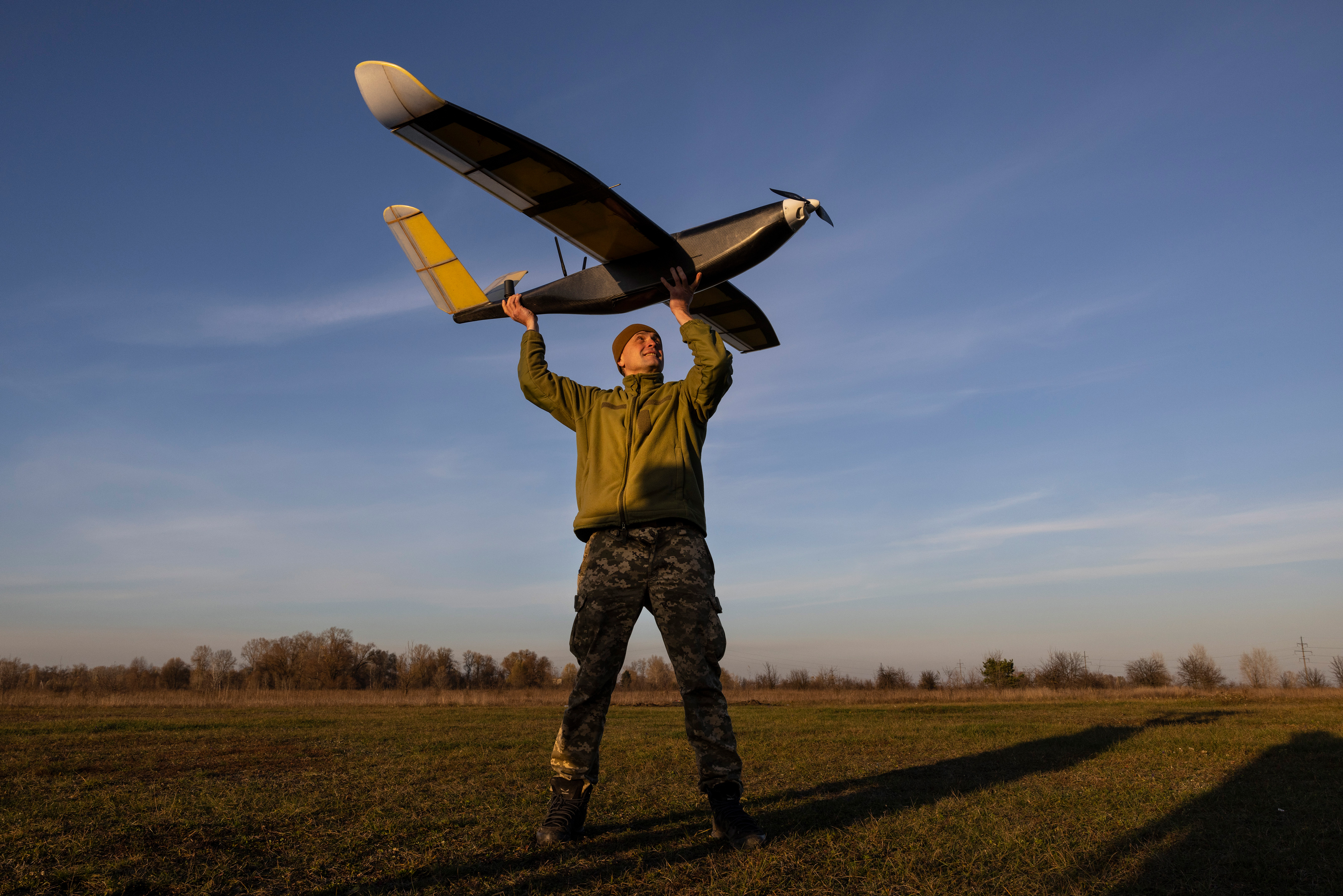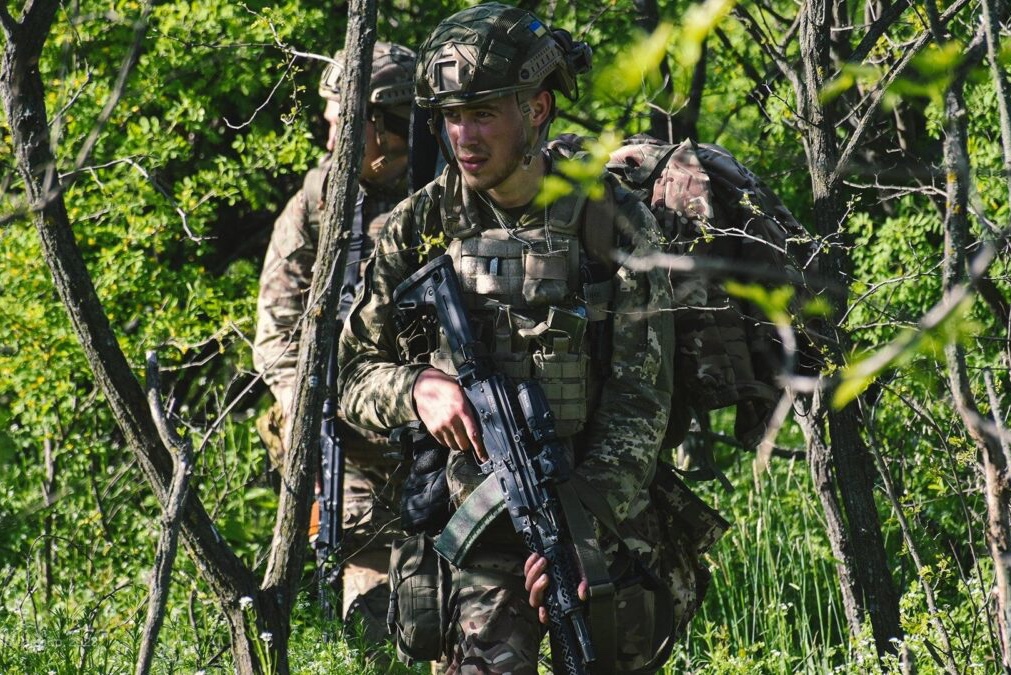Hummmm...............
Posted for fair use.....
Our instructors were training a Ukrainian national guard unit near the Moldovan border. When we arrived at the range, a Ukrainian unit was already on the
warontherocks.com
WHAT THE UKRAINIAN ARMED FORCES NEED TO DO TO WIN
ERIK KRAMER AND
PAUL SCHNEIDER
JUNE 2, 2023
COMMENTARY
Our instructors were training a Ukrainian national guard unit near the Moldovan border. When we arrived at the range, a Ukrainian unit was already on the range throwing hand grenades in an open field less than 200 meters from us, then just dropping to the ground and watching them explode without any cover. These soldiers then proceeded to conduct machine gun training, shooting from positions from the left range berm across the range (not against the backstop). Our instructors were conducting round-robin training about 150 meters behind the range, and the rounds were whistling over our heads. When we approached the person in charge, he said not to worry; he was a Ukrainian marine who had survived Mariupol, and the range was to NATO standards. The bravery and elan of the Ukrainian Armed Forces are not in question, but this example is a small indicator of the issues plaguing the training of the Ukrainian Armed Forces — the lack of an ingrained understanding on how to conduct uniform, consistent training.
Based on our nine months of training with all services of the Ukrainian Armed Forces, to include the Ground Forces (Army), Border Guard Service, National Guard, Naval Infantry (Marines), Special Operations Forces, and Territorial Defense Forces, we have observed a series of common trends: lack of mission command, effective training, and combined arms operations; ad hoc logistics and maintenance; and improper use of special operations forces. These trends have undermined Ukraine’s resistance and could hinder the success of the ongoing offensive.
How can Ukraine change the formula in their favor? The answer is uniform combined arms training focusing on mission command from the brigade level down, which the Ukrainian Armed Forces can achieve through a repeatable thirty-day “train the trainer” program. This instruction could be carried out by Western contracted military instructors, working with Ukrainian military veterans in Ukraine. This training will enable them to conduct combined arms operations and capitalize on the advantages the influx of advanced Western military equipment provides, and hopefully to enable Ukraine to overcome Russia’s manpower advantages.
Lack of Mission Command
In our experience, across many units and staffs, the Ukrainian Armed Forces do not promote personal initiative and foster mutual trust or mission command. As Michael Kofman and Rob Lee
recently discussed on the
Russia Contingency podcast, elements of the Ukrainian Armed Forces have an old Soviet mentality that holds most decision-making at more senior levels. Amongst military leaders at the brigade level and below, our impression is that junior officers fear making mistakes. During our training sessions with field grade officers, we are often asked what the punishment is for failure during missions or making bad decisions. We are also repeatedly asked at each step of planning or operations, “Who is allowed to make this decision?” They are surprised that U.S. battalion battle captains (staff officers who oversee ongoing battalion operations) have the authority to make decisions or give orders on behalf of the battalion commander.
During training exercises, we have repeatedly observed that the Ukrainian military’s planning process requires separate orders for each phase of the operation. For example, a battalion in the defense cannot conduct a counterattack even if they are attacked. They do not have potential stand-by missions such as “be prepared to counterattack” that are planned in advance to exploit unexpected opportunities. They must await orders. Of course, the Ukrainian military’s planning process is based on local doctrine, and in actual combat, it depends upon the commander. However, what we have observed is that there are serious changes happening throughout the Ukrainian military’s officer corps. The younger officers realize that they must get rid of the old mentality but continue to face resistance from older officers wedded to Soviet doctrine and centralized planning. Michael Kofman and Rob Lee made similar observations after their most recent research trip to the country.
Having trained every component of the Ukrainian Armed Forces, we have continually seen a lack of an experienced noncommissioned officer corps. It is common to see field grade officers running around during training counting personnel and coordinating for meals. In the United States, it takes years to develop just a junior noncommissioned officer. Senior noncommissioned officers at the platoon level have at least ten years of experience. In the U.S. military, lieutenants lead platoons, but it is the job of the platoon sergeant to train them, as discussed in
Defense News. In Ukraine, it is the job of a platoon commander straight out of their service academy to lead and train their platoon. Without effective noncommissioned officers, mission command at the company level and below is almost impossible to do, and they are directly responsible for the care, mentoring, and training of soldiers.
Lack of Effective Training
The Ukrainian Armed Forces’ current training philosophy is based on the old Soviet model. Large-scale battalion-level training is orchestrated and choreographed. During several exercises, we witnessed company commanders overseeing the exercise from afar and only occasionally interjecting. They were acting more as observers than direct participants. This philosophy is changing and, as noted in the
Russia Contingency, appears to be generational. Younger officers are more open to Western military–style leadership, while older officers have clung to Soviet doctrine. Despite these tendencies, we have yet to see any true combined arms training involving infantry, artillery, and armor working together. Synchronizing all these different elements to achieve maximum military effect, avoid fratricide, and confuse the enemy’s takes repeated training at all levels of command, which allows leaders to make mistakes and work through processes.
One critical challenge is in how the Ukrainian military trains and how the training centers for soldiers are set up. In the armed forces, each service has its own training centers, staff, academies, and training regimes. Rarely do they exchange instructors or, for example, have national guard units train at an army center. We asked our Ukrainian counterparts directly if we could bring some Territorial Defense Forces soldiers to train on a national guard base. We were told that was not possible because they were not national guard. This system is extremely inefficient. It wastes resources and also results in wildly varying degrees of competence across services and units. The services in Ukraine’s armed forces are also not conducting planning and training from the same doctrine or tactics, techniques, and procedures. As a result, when Ukraine’s services do conduct operations together, misunderstandings, distrust, and miscommunications are very common.
As
noted in these virtual pages, there are several volunteer organizations training the Ukrainian Armed Forces. Most of this training’s focus is on basic soldier skills at the company or platoon level. The training is disjointed and haphazard, and the quality of instruction varies. NATO is
training select units and soldiers outside of Ukraine. While this training can be effective and necessary for certain specialty skills, such as tank crews and HIMARS teams, it takes units and soldiers away from the front line for weeks, if not months, at a time. Commanders cannot afford to lose units and soldiers for extended periods. According to our field research, there is evidence of this immediate need because most of the units we train go to the front the day after we finish a training session. We also believe that the training efforts outside of Ukraine are not consistent and do not use common programs of instruction. Furthermore, these foreign training efforts adhere to the host country’s doctrine. While they do attempt to incorporate the realities in Ukraine, many of them do not fully adapt their training regimes to the way the Ukrainians fight, especially with the Ukrainian doctrinal and legal restraints on operations.
Lack of Combined Arms Operations
A critical challenge for the Ukrainian Armed Forces is they do not consistently conduct combined arms operations. The lack of combining synchronized operations results in greater losses of life and equipment as well as failed operations. Based on our discussions with Ukrainian company commanders and our own trainers who fought with the Ukrainian Armed Forces, tanks are used more as mobile artillery and not in combined operations with infantry where the armor goes into action just ahead of the infantry. We have seen firsthand the shot-out barrels of tanks (and artillery) from constantly being fired at max range or overused without maintenance or replacement. Michael Kofman
has made similar observations. The armor/infantry relationship is supposed to be symbiotic, but it is not. The result is that infantry will conduct frontal assaults or operate in urban areas without the protection and firepower of tanks. Also, artillery fires are not synchronized with maneuver. Most units do not talk directly to supporting artillery, so there is a delay in call for fire missions. We have been told that units will use runners to send fire missions to artillery batteries because of issues with communications.
Most of the military’s operations are not phased and are sequential. Fires and maneuver, for example, are planned separately from infantry units — and infantry units plan separately from supporting artillery. This mentality also carries over to adjacent unit coordination, which is either nonexistent or rare and causes high rates of fratricide. Unit commanders have concerns about collaborators and thus are hesitant to pass on critical information that can be used against them to sister units.
These issues are compounded by unreliable communications between units and with senior leadership. The Ukrainian Armed Forces have a hodgepodge of radios that are vulnerable to jamming. Further, battalion missions are mainly independent company operations that do not focus on a main effort coupled with supporting efforts. The armed forces do not combine effects, so operations are piecemeal and disjointed. The separate missions are not supporting each other, nor are the missions of lower level units “nested” under a higher level mission. Sustainment is not synchronized with operations, either.
Ad Hoc Logistics and Maintenance
Western aid has been critical for Ukraine’s defense. However, the variety of equipment Ukraine now uses has led to significant logistics and maintenance challenges. In our experience, the Ukrainian military cannibalizes new equipment arriving in Ukraine to service equipment deployed in the field. As a result, front-line units only receive a small percentage of what is sent to the country. For example, a .50 caliber machine gun arrives in Ukraine with extra barrels, parts, manuals, and accessories, but by the time it gets to Donbas, all that remains is the gun.
As
others have written, Ukrainian forces have leaned on YouTube videos to learn how to use new and unfamiliar equipment. Also, the mentality of supply distribution in Ukraine is to husband resources. Most battalion supply officers are appointed and not school trained. They might have an assistant and some vehicles, but everything is based on personal initiative. Maintenance is based on cannibalization, horse trading between units, and battlefield recovery. There is not a steady stream of repair parts or a system of maintenance at the unit, battalion, brigade, and depot levels. The skill of maintainers is based more on personal aptitude and less on school-trained mechanics. All the services have maintenance courses, but that does not translate into a ready pool of mechanics.
Continued.....

